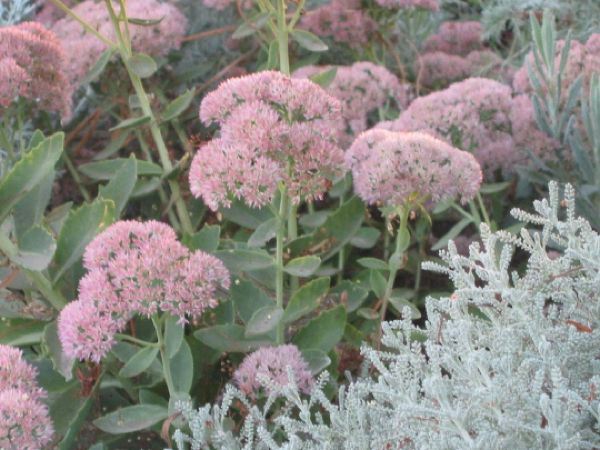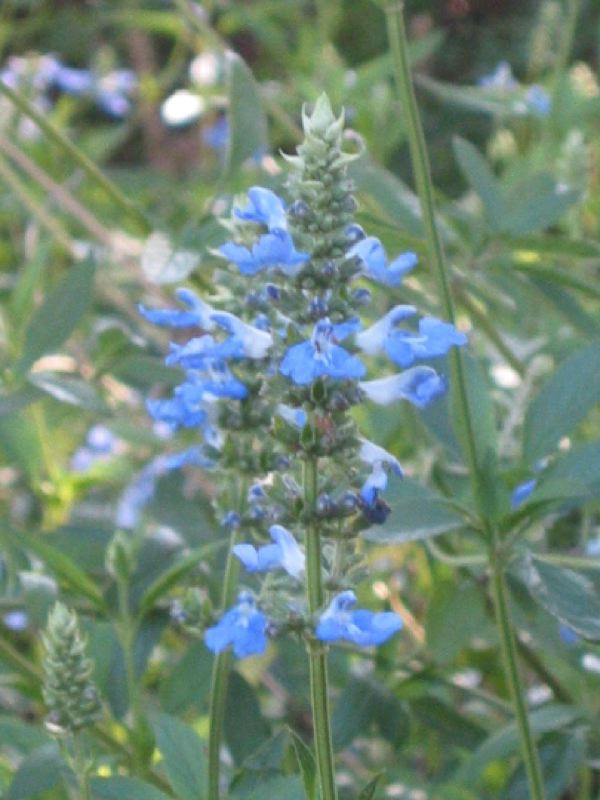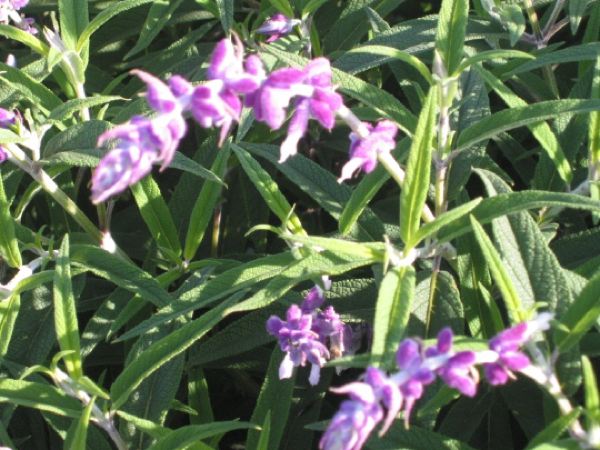Early autumn flowers!
Sure feels like fall today, with high temperatures in the mid-80's. There will be hot weather again before summer ends, but gardeners can look ahead now to one of our best gardening seasons....
Warm days, cool nights, and dry weather characterize the early fall here. Great gardening weather, a perfect time to re-seed your lawn, plant landscape shrubs and trees, divide perennials. But don't forget flowers at this time of year.
Annuals
Nurseries and garden centers are already carrying the winter annuals, many of them in full bloom: pansies and violas, snapdragons, stock, and calendulas in six-packs and four-inch pots. These will give quick color, but may go out of bloom if there is another spell of hot weather. Don't be discouraged. Trim off the spent blossoms and seed heads, and new flower buds will emerge almost immediately. All of the afore-mentioned flowers will bloom all winter and well into next spring. One of my favorites is Chrysanthemum paludosum. This relative of the more familiar Mums has an annual white flower that resembles a miniature Shasta daisy, blooming from October through May.
Perennials
Perennials bloom year after year. Many summer bloomers produce another crop of blossoms in fall; others are autumn specialists.
Achillea
Yarrow. Many new colors, mostly warm pinks, reds, yellow. All yarrows draw beneficial insects and spread steadily but not rampantly. Will take light shade. These have been blooming all summer, but usually put on a late summer surge of flowers which age gracefully and which also dry nicely.
Achillea
Asters resemble Chrysanthemums, but bloom earlier: mid-summer to early fall. They are bright little daisies, available in lavender, purple, pink, red, and white. All attract butterflies. New varieties have compact growth habit. One of my favorite garden plants in recent years is the old-fashioned fence aster, a big sprawling lavender-flowered daisy which sprawls out over nearby shrubs and trees in September and October.
Chrysanthemums
This is the fall perennial that everyone knows. The big-flowered types that you see in stores are not great garden plants. They require careful staking, pinching, and trimming to get large flowers, and the plants flop all over the place. But there are many miniature, smaller-flowered varieties whose compact growth habits make them excellent garden plants. King's Mums in Clements is the authority on Mum varieties and cultivation: www.kingsmums.com.
Sedum spectabile
Sedums are succulent plants, usually grown for the foliage. But S. spectabile has spectacular early fall flower clusters in shades of pink and red, which age to a unique brownish-red color. This is a tough plant for full sun or light shade.
Roses
Fall in the Sacramento Valley is a wonderful season for our roses. On your traditional types such as Hybrid Teas (long-stem cutting roses), trim off the hips (seed pods) that may have formed this summer. Shape the bushes a bit with light pruning. Remove any suckers that have sprouted – they are obvious shoots, much more vigorous and vine-like than the main plant. Wash the summer dust and spider mites off the foliage with a strong blast of water. Give each plant some fertilizer and a good soaking. You can expect a nice crop of flowers by Hallowe'en, with blossoms continuing into November.
More informal roses such as the shrub and landscape types may have set a large crop of hips, and these color nicely as the nights get cooler. Rose hips can be used for tea (simply remove the seeds, then simmer 4 – 6 hips in 2 cups of water for about 30 minutes, strain and serve) or for winter wreaths and decorations.
Salvia: the sages are the royalty of the autumn border.
With over a hundred species and varieties of Salvia available from growers, we have types that bloom nearly any time of year. But summer and fall are when Salvias really fill the border. Vivid purples, reds, pinks, some startlingly bright. Salvia flowers attract hummingbirds. Here is just a sampling of some notable species and hybrids.
Annual salvias
The short, annual red-flowered S. splendens blooms until frost. S. farinacea, the Texas violet, has lovely light blue flower spikes. It doesn't usually overwinter here, so we treat it as an annual. Though both are considered 'summer annuals', their fall bloom is outstanding.
Perennial salvias
Herbaceous (soft) forms that are especially showy include
S. elegans
Pineapple sage, named for the scent of the foliage. Blooms into winter. Expect some cold damage, but it usually resprouts in spring.
S. guaranitica
Anise-scented sage. Big sprawly thing with spectacular flowers. Spreads. Hack it to the ground each winter.
S. 'Indigo Spires'
Another sprawly plant with vivid violet-blue flower spikes which are long enough to cut for flower arrangements.
S. nemorosa
One of the showiest garden Salvias, with a low growth habit and copious blooms. 'East Friesland' is one of the best varieties: non-stop spikes of purple flowers from May through October.
S. uliginosa
Bog sage. One of my favorites for the sky-blue flowers. As the name implies, this will grow in soggy soil. In the 'normal' border it makes a great indicator plant: droops when the border needs water, then perks back up instantly. Be forewarned: spreads aggressively. Prune with a machete.
Shrubby salvias
Forms that have showy summer and fall flowers include:
S. greggii
with numerous varieties and hybrids.Called Autumn sage, although they will bloom nearly any month of the year here. Steady, reliable, long-lived shrubs with flowers that are small but abundant and available in nearly every shade of red, purple, pink, and even white. S. microphyllais basically the same, and S. x jamensisis the name given to hybrids between the two species.
S. leucantha
Mexican sage. Big, upright to about 4' here, this may fall over as it blooms. So plant it behind other, stouter Salvias or lower shrubs. Spectacular velvety royal purple flowers continue until frost. One of my favorites.
There are several attractive native and culinary Salvias as well.
These California natives are great garden plants, especially in low-water landscapes. But most bloom in spring or early summer, finishing their cycle before our summer heat and drought puts them into a semi-dormant state. Attractive foliage and growth habit makes them suitable background plants for the fall-blooming species.
S. apiana
White sage, used for burning rituals. Intensely scented foliage is silvery-gray, almost white. Great in a moonlight garden.
S. clevelandii
California blue sage. A chaparral shrub from Southern California. There are some named hybrids with uniformly compact growth habit, showier flowers than the species.
S. spathacea
Pitcher sage. The giant arrow-shaped leaves are attractive enough in their own right. The 3' flower spikes are stunning and, as Sunset says, 'a magnet for hummingbirds.' This spring bloomer may give a repeat fall bloom.
Salvia officinalis
Garden sage. This is the sage we use in cooking, but it is also an attractive shrub in the landscape or border. The standard form has purplish-grey leaves, but there are forms with golden and pink variegation as well. Tolerant of heat, drought, light shade, it grows to about 3' x 3' or more. Combine with lavender and rosemary as the year-'round backbone of your herb garden.
Brightening the autumn flower garden can seem like a challenge, as we continue to swing back and forth between cool weather and hot spells. Don't worry about short intervals of hot weather. Water new plants thoroughly when you install them, then check every other day. As the days shorten and nights cool, new transplants probably need water every 3 – 4 days.
From the Davis Enterprise, September 27, 2007




